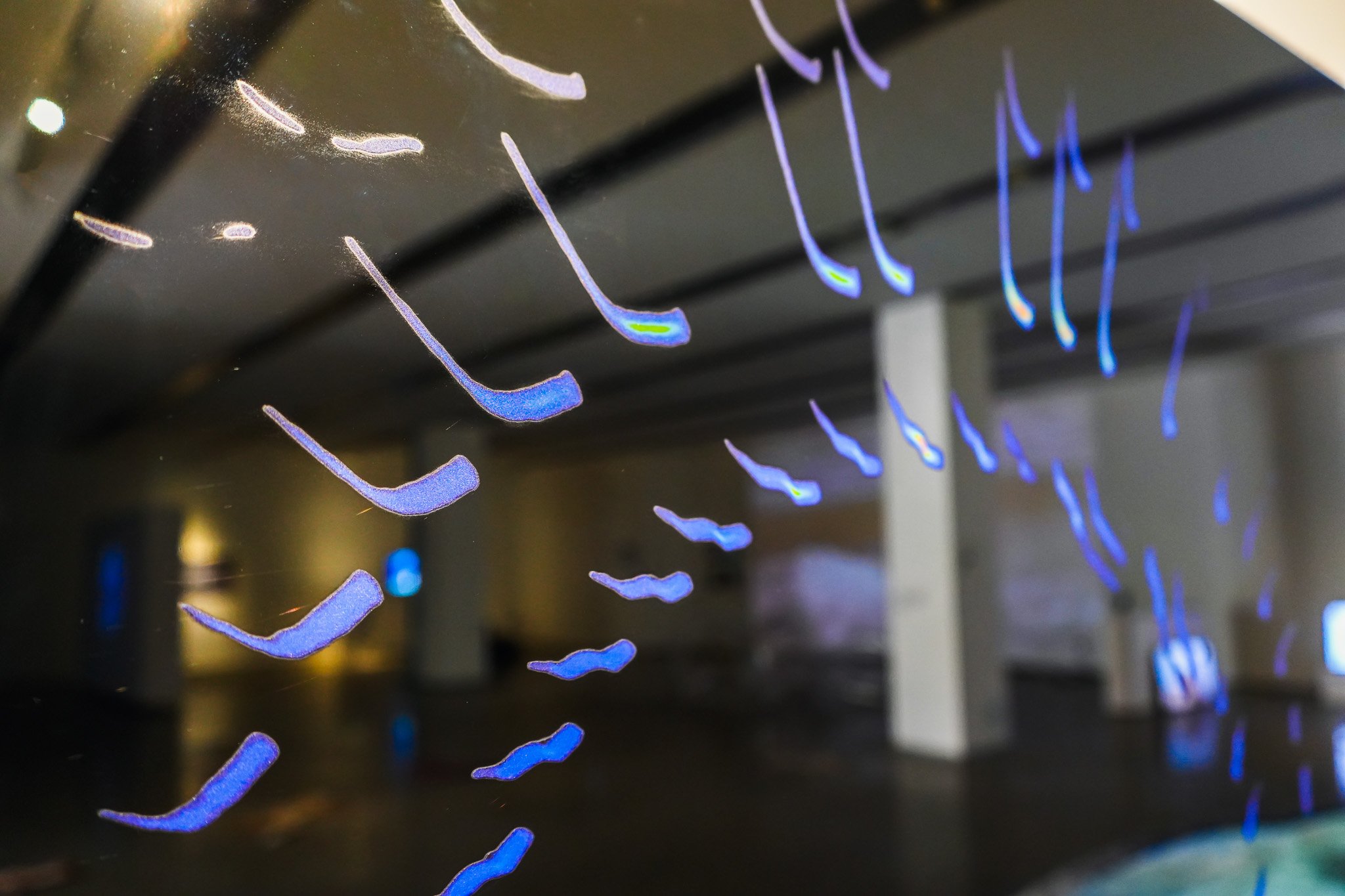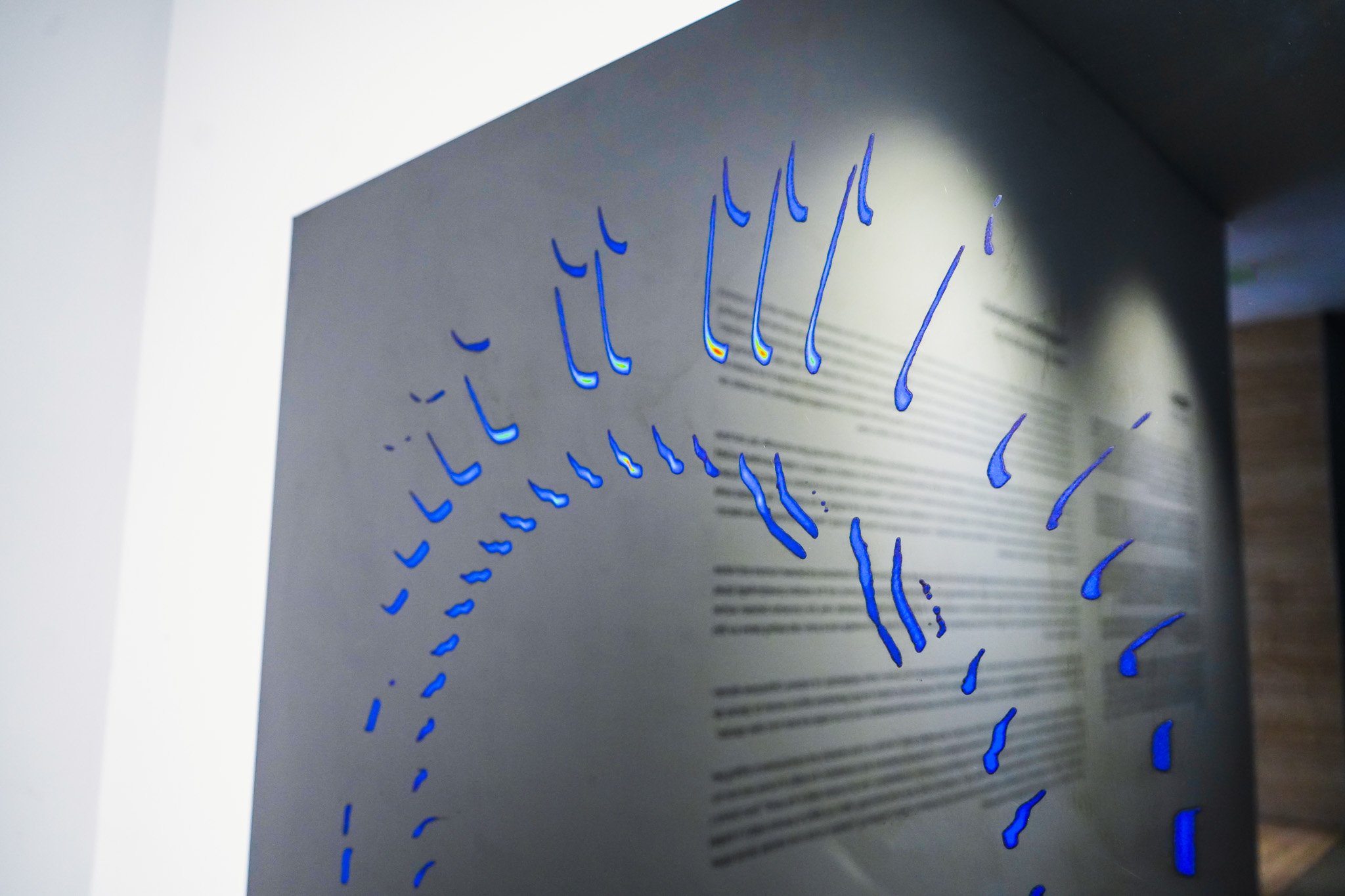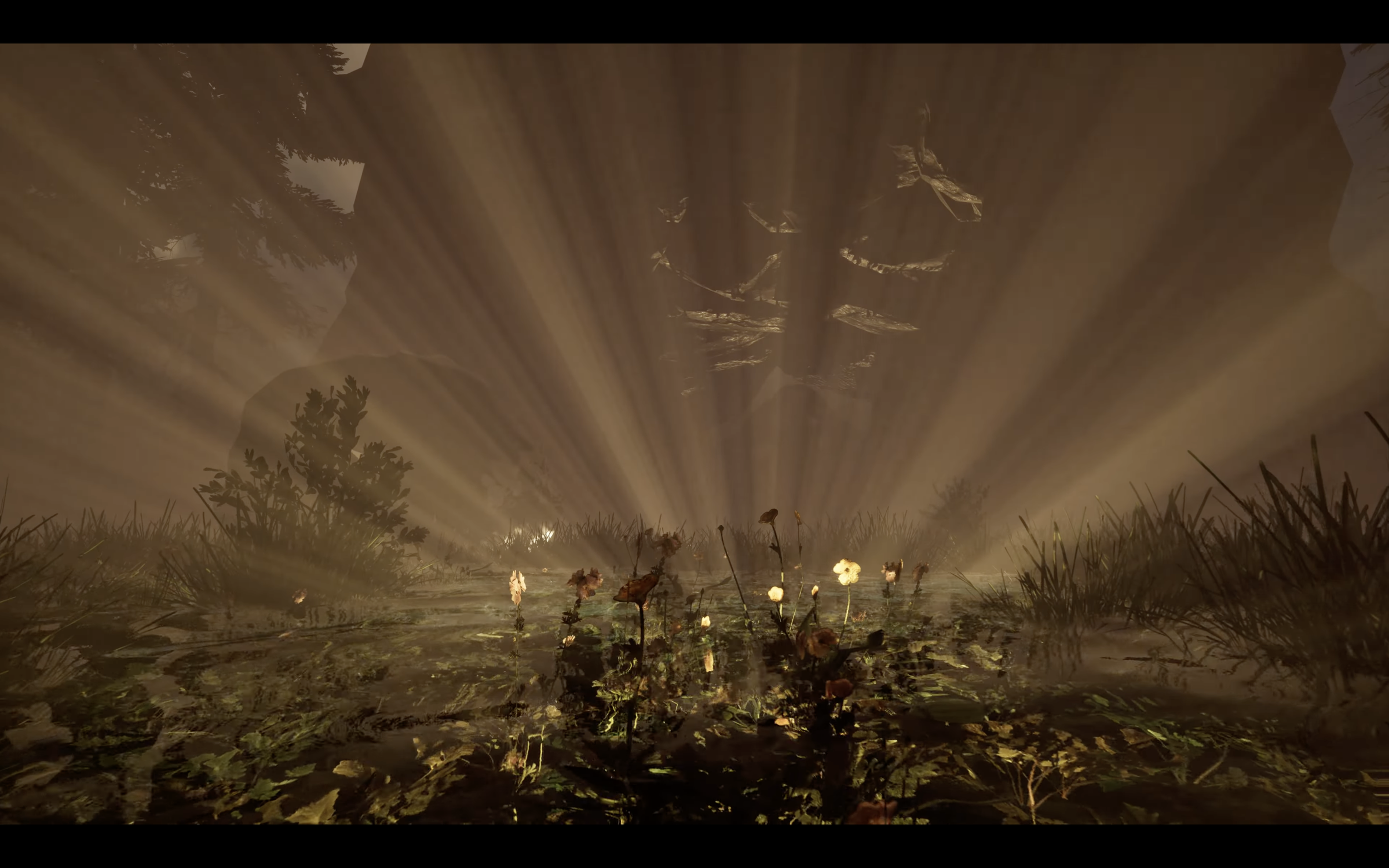Nocturnal Fugue + EchoVision
Jiabao Li, Matt McCorkle, Botao Hu, 2024
Inspired by Thomas Nagel's "What Is it Like to Be a Bat?", "Nocturnal Fugue" immerses audiences in the intricate language of bats through AI-discovered social calls and digital habitat simulations, using spatial sound, projection mapping, and haptic transducers. "EchoVision" complements this with a mixed reality experience simulating bat echolocation.
Nocturnal Fugue
With the help of AI, researchers found bats have more complex language than previously thought, with individual names, the ability to argue over food, and vocal learning. Just like human baby talk, mother bats lower their pitch when talking to babies. What would a baby bat lullaby sound like? Would a song made of bat mating calls be a love song?
Enter into Nocturnal Fugue, where you experience an immersive world of bats. Their social vocalizations transform into evocative music set to imaginative digital recreations of their natural habitats. Each digital habitat crafts a different sense of scale and time, creating a mood centric to the social vocalizations that are being heard and felt. Explore and feel the identity of bats through their isolation, sleeping, kissing, mating, feeding, grooming, and fighting vocalizations. As their sounds are transmogrified into imaginative soundscapes you are transported into the unique sonic world of bats through spatial sound, immersive projections, and haptic vibrations.
Inspired by Thomas Nagel's philosophical inquiry in "What Is it Like to Be a Bat?", this project delves into the enigma of truly comprehending the experience of another species. While we may grasp the superficial metadata of bat behavior, the true content of their communication remains elusive. Can we ever fully understand the language of bats, even with the aid of AI? We might not be able to find many words from the bat world in human’s dictionary.
EchoVision
EchoVision is an immersive art installation that allows participants to experience the world of bats using sound visualization and mixed reality technology. With a custom-designed, bat-shaped headset from the open-source HoloKit project, users can simulate echolocation, the natural navigation system bats use in the dark. They do this by using their voices and interpreting the returned echoes.
The exhibit adjusts visual feedback based on the pitch and tone of the user's voice, offering a dynamic and interactive depiction of how bats perceive their environment. This installation combines scientific learning with empathetic engagement, encouraging an ecocentric design perspective and understanding between species. "Echoing Bat" educates and inspires a deeper appreciation for the unique ways non-human creatures interact with their ecosystems.
Appeared on Xinhua News 新华社
在人工智能的助翼下,研究人员发现蝙蝠的语言比我们所知的更加复杂,它们有名字,会争论,还能进行语言学习。就像我们和婴儿说话时会用可爱的声调,蝙蝠妈妈在和蝙蝠宝宝说话时会降低声调。想象蝙蝠的摇篮曲,会是怎样的旋律?蝙蝠求偶之声,又能谱出怎样的情歌?
步入“夜曲赋格”,沉浸于蝙蝠的幻境世界。蝙蝠的语言谱出情感丰沛的乐章,与虚拟的自然栖所相辉映。
每一处栖所,皆有别具一格的规模与时光感,营造出与所闻所感的蝙蝠的语言相应的情境氛围。探索蝙蝠的独特身份,体会它们在孤独、沉睡、亲吻、交配、觅食、梳理及争斗时的各种声音。
本项目灵感源自托马斯·内格尔的哲学探究《成为一只蝙蝠会是什么样?》,深入探讨真正理解另一物种体验的奥秘。我们或许能触及蝙蝠行为的表层元数据,但它们交流的真谛,仍遥不可及。即便借助人工智能,我们真的可以完全解读蝙蝠的语言吗?我们的词典里可能找不到很多数蝙蝠用到的语汇。

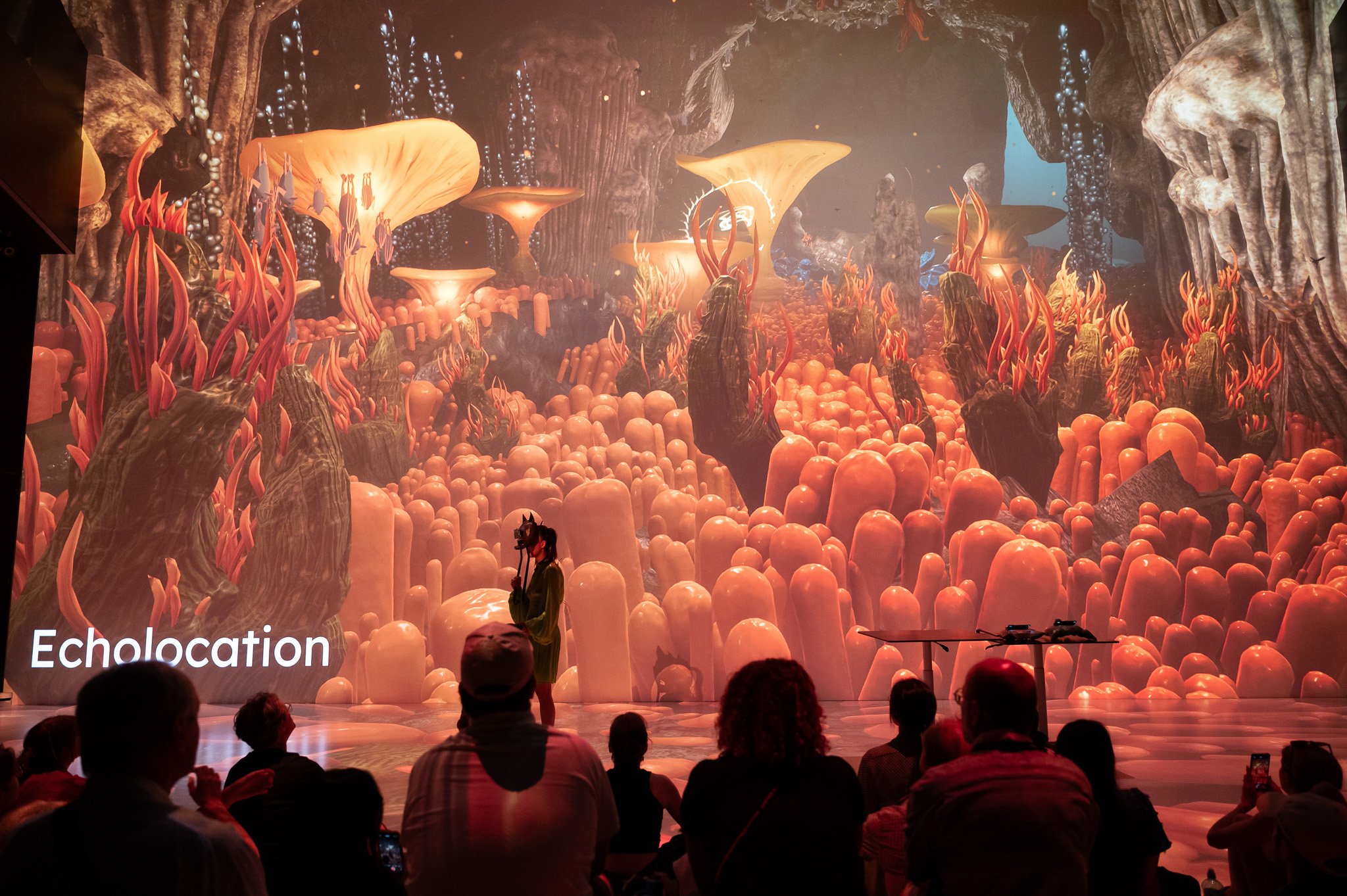
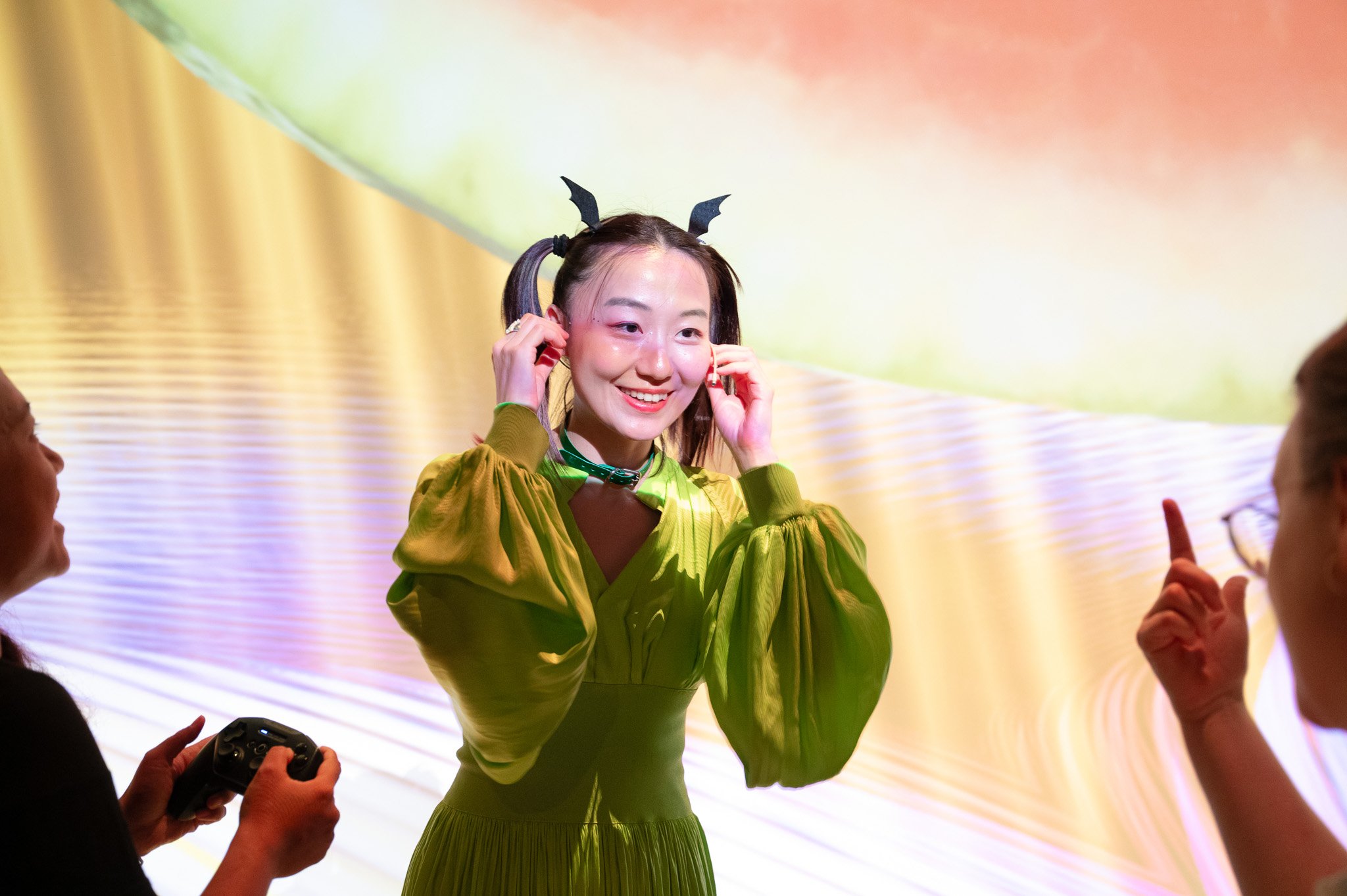
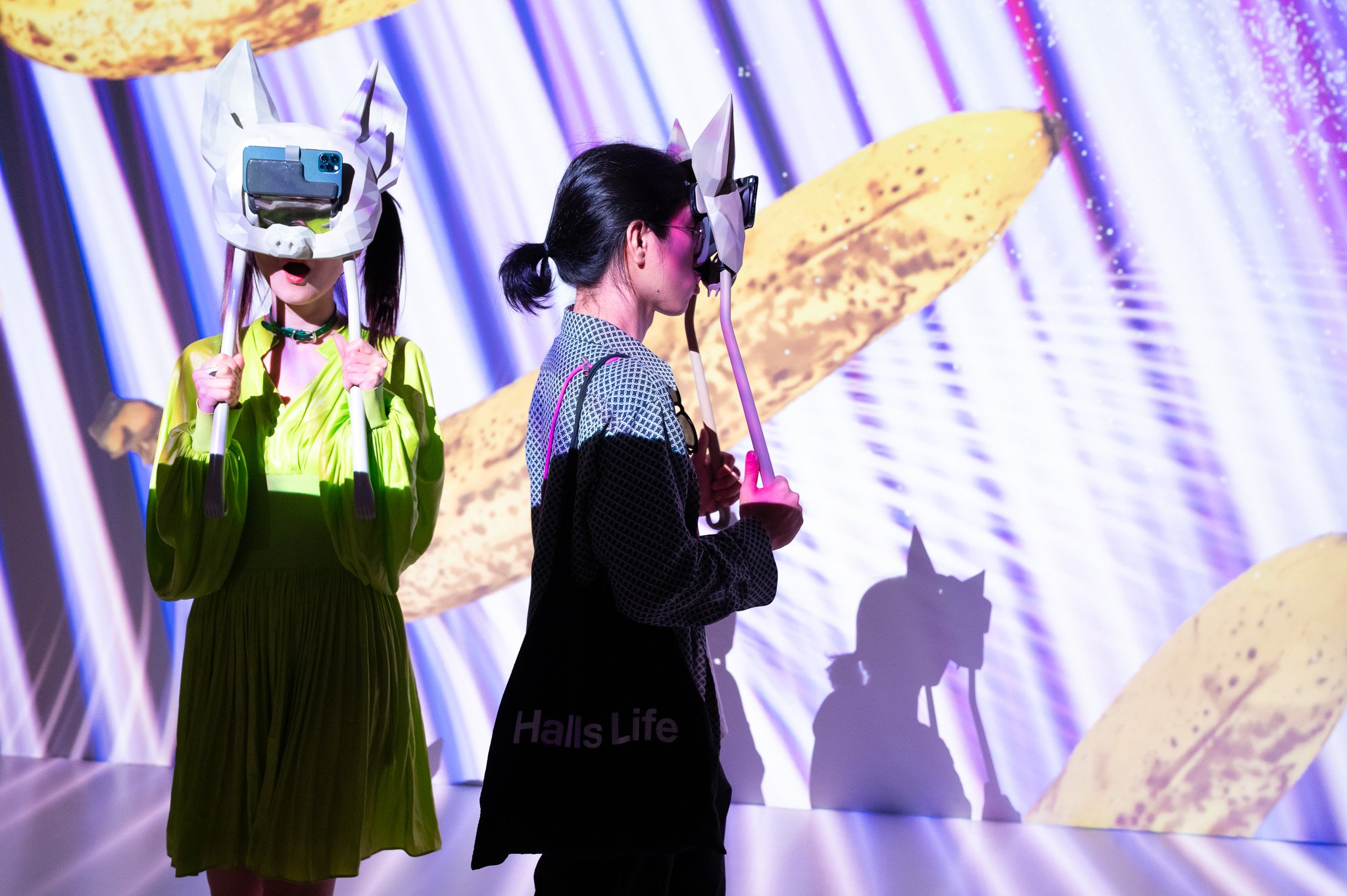
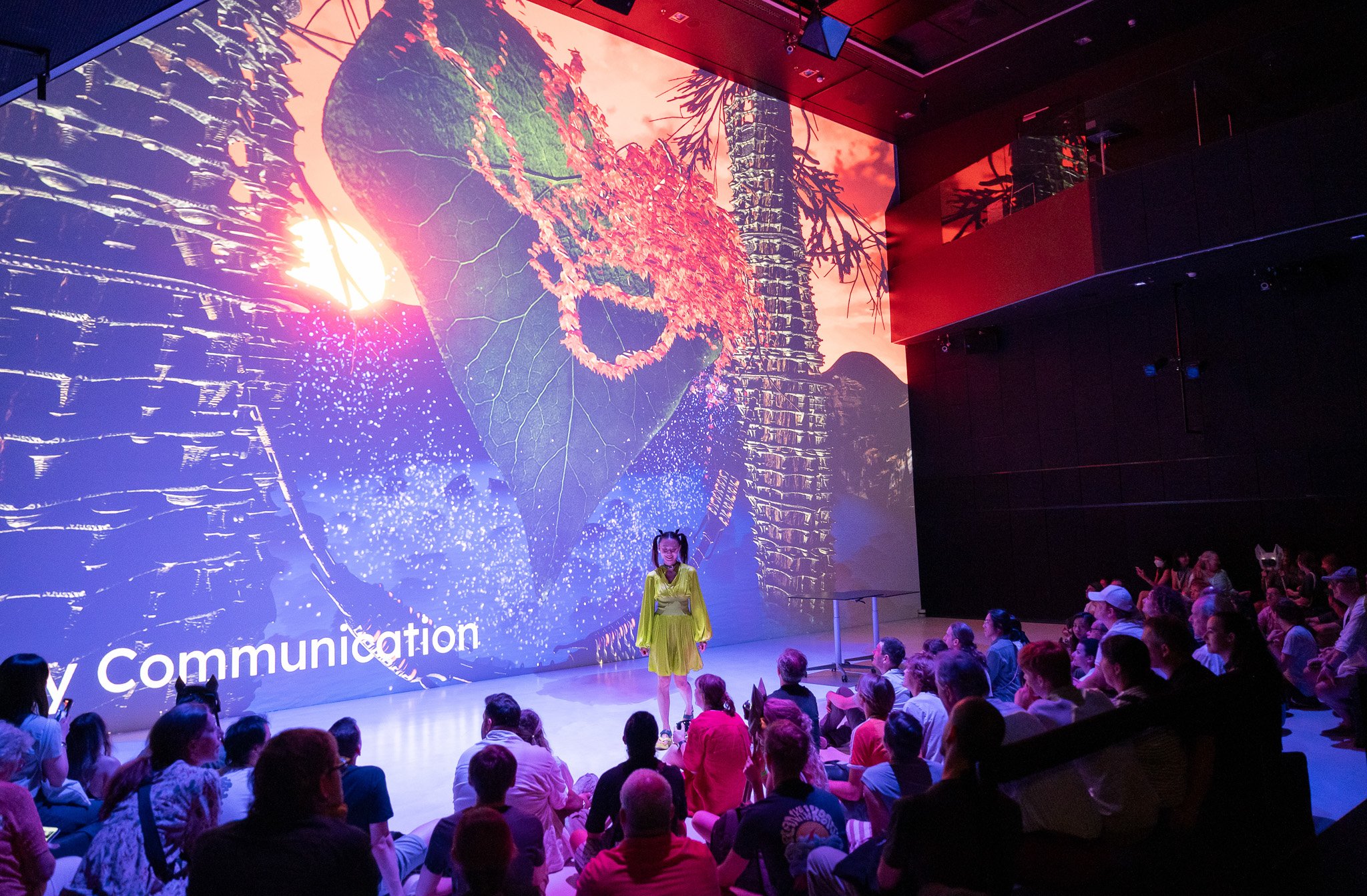
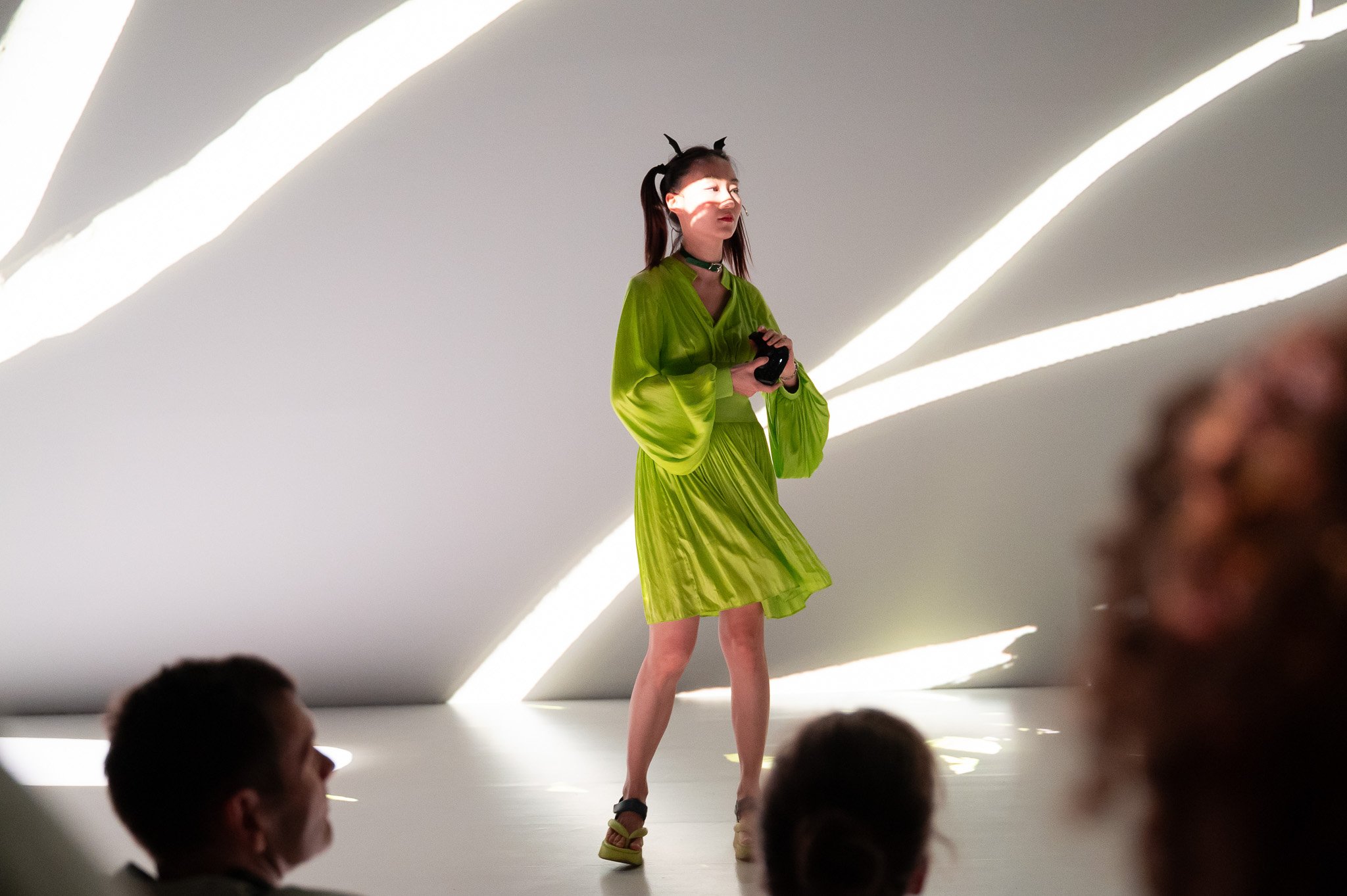

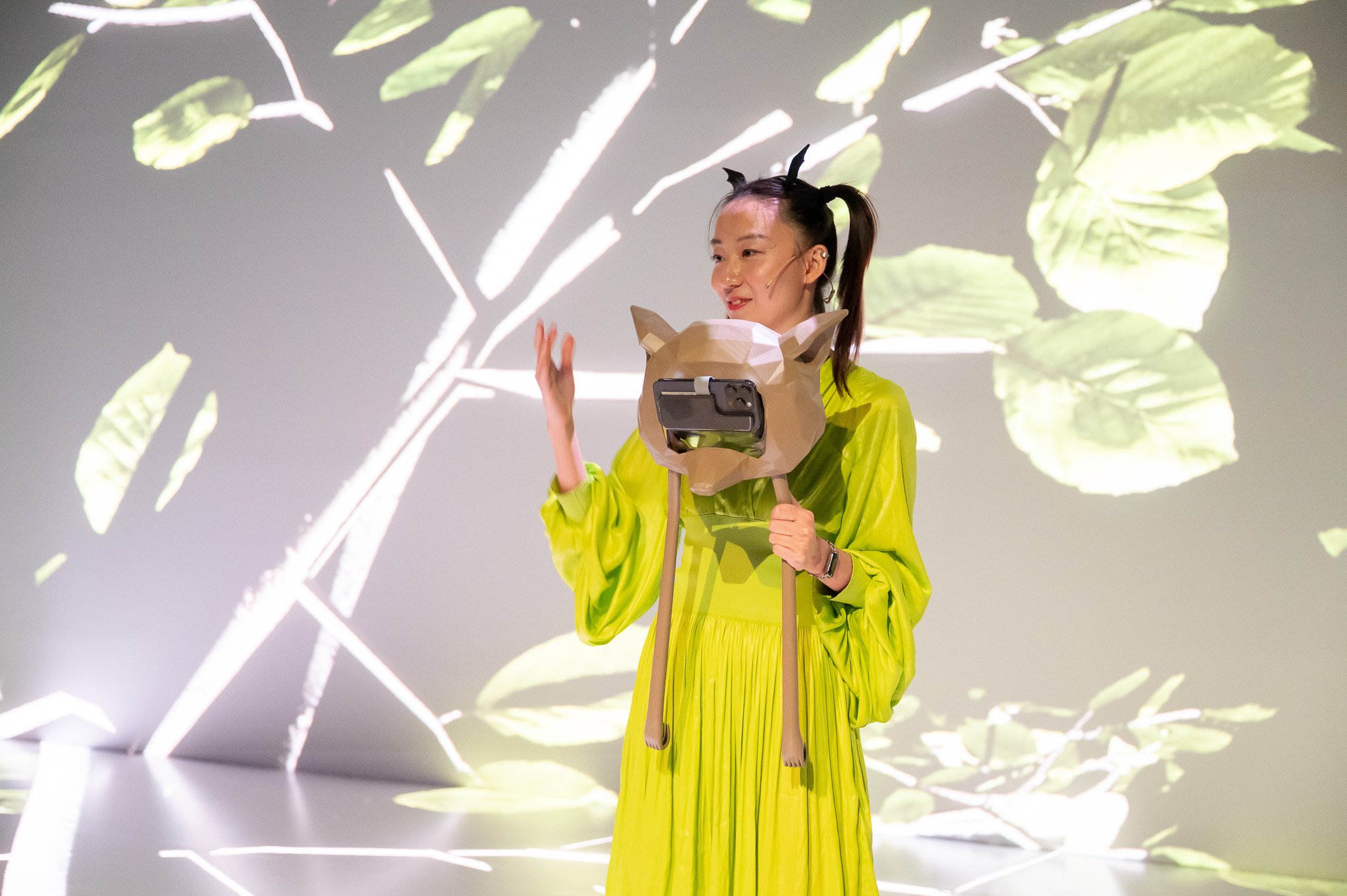

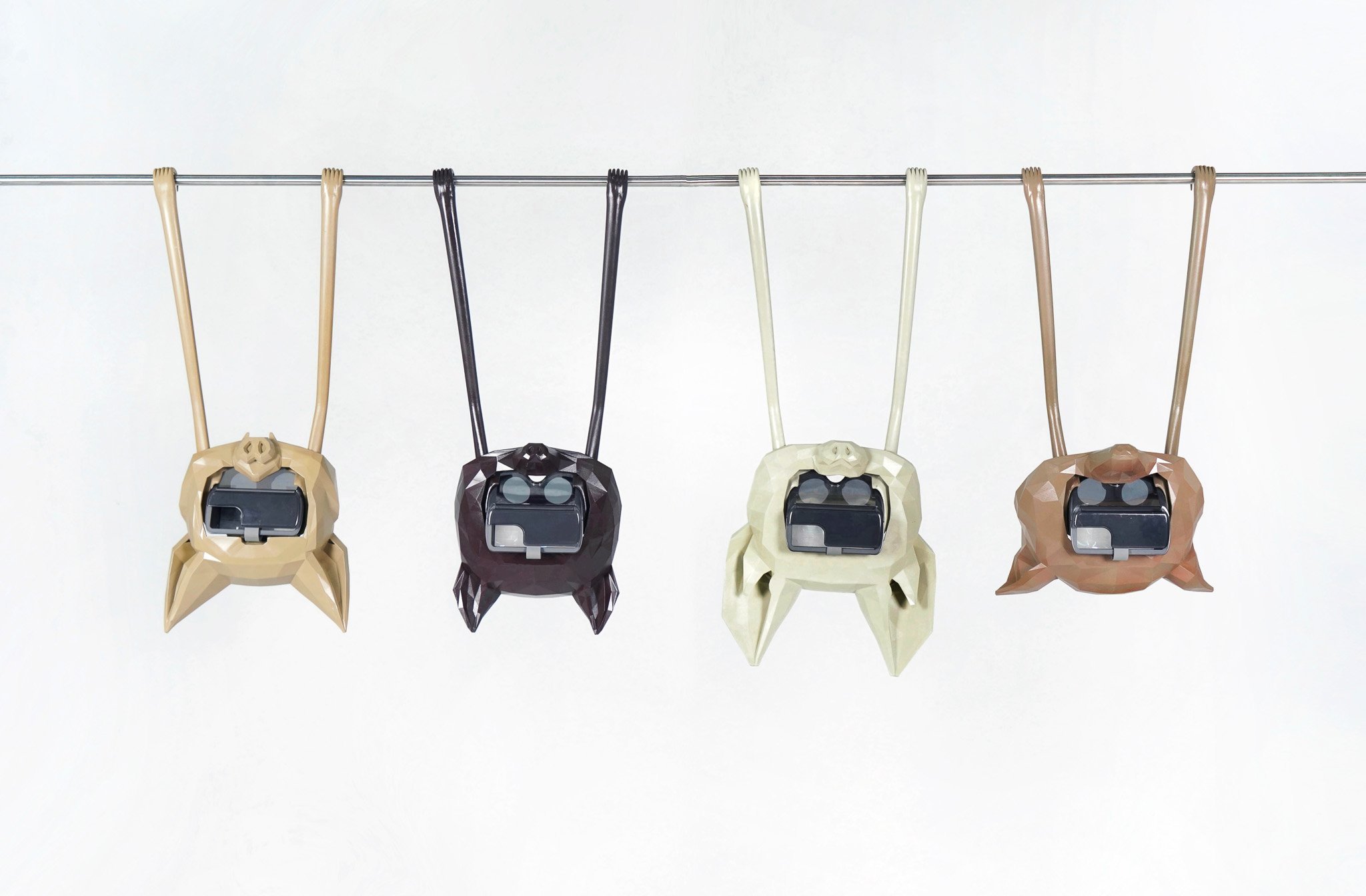


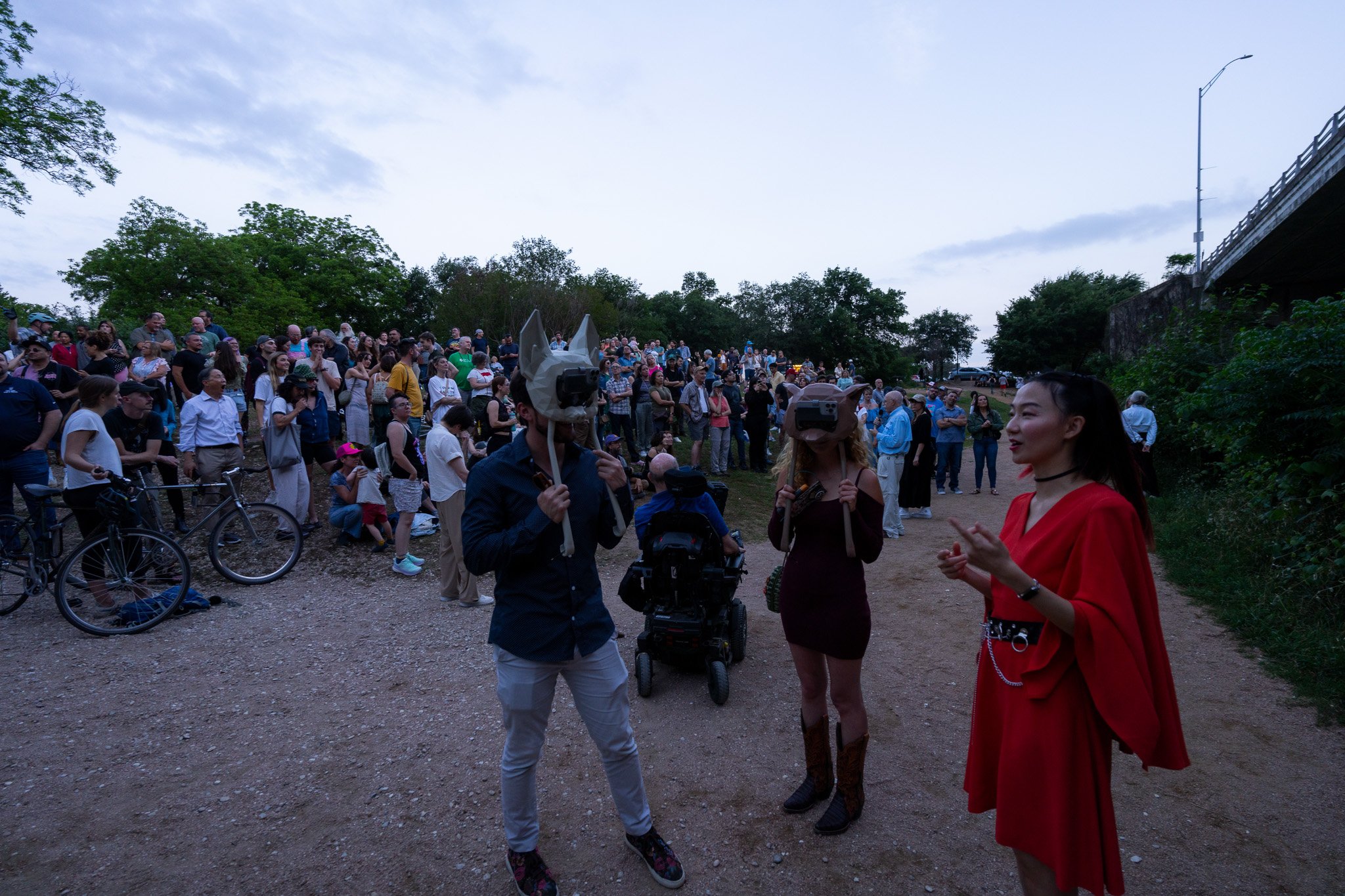







At Sheffield DocFest, Alternative Realities, 2024, UK
Inspiration background:
At the Austin Bat Refuge, we find great joy in rehabilitating injured bats and collecting their enchanting sounds that inspire both fascination and awe. When the night sky illuminates with the flight of two million bats from the iconic Austin Congress bat bridge, their fleeting and flickering symphony of social calls and echolocations paints an intricate map of their world. To connect with these fascinating creatures, we embarked on a collaborative journey to create a symphony of music composed of bat sounds interpreted by AI.
Mediums: Digital world, immersive soundscapes, haptics.
